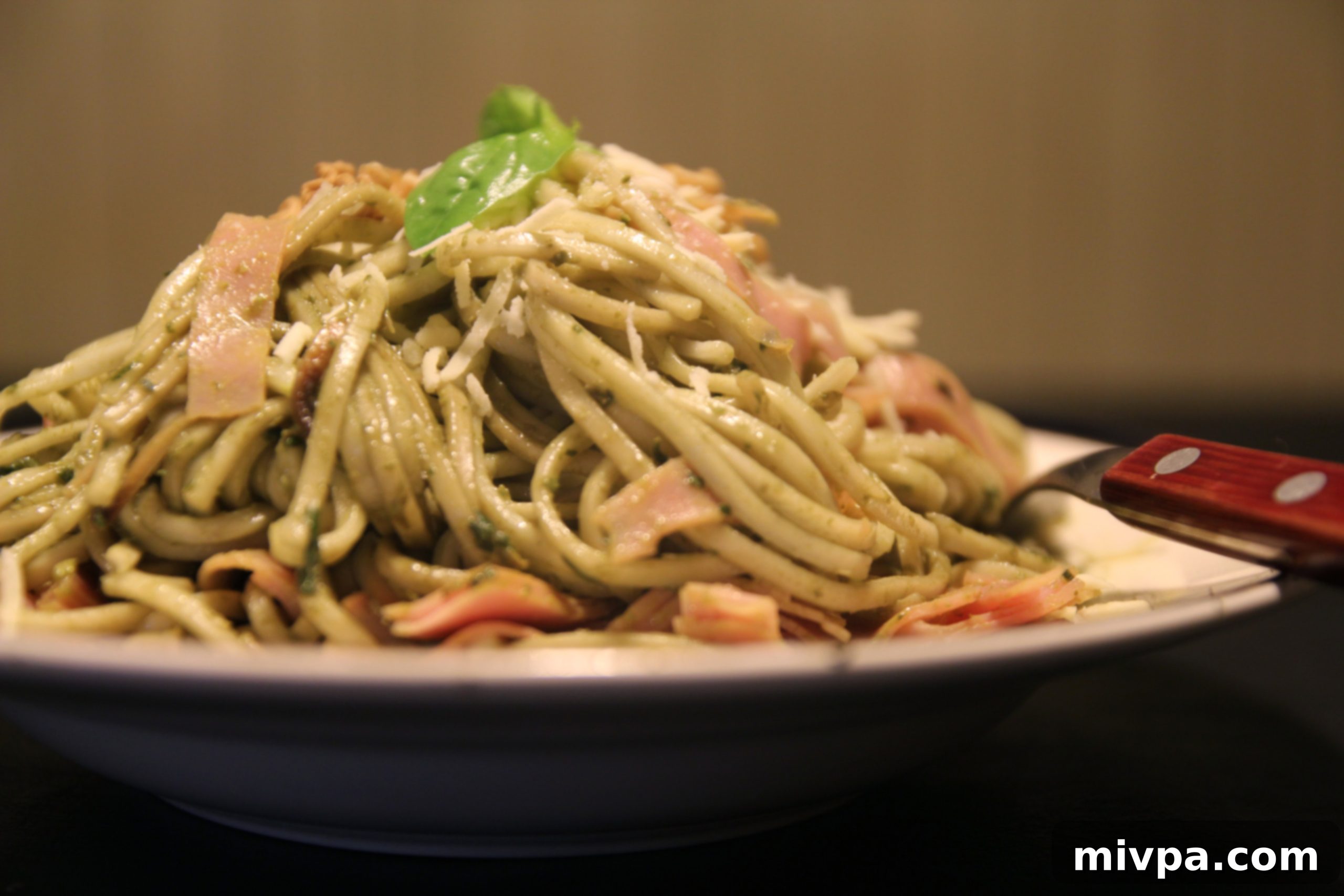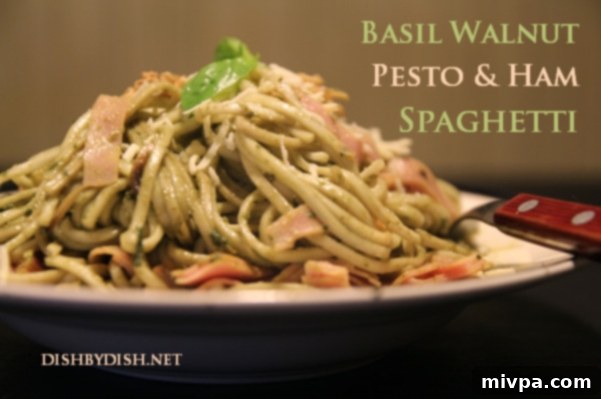Embracing Quiet Moments: Cultivating Clarity, Creativity, and Culinary Joy with Homemade Pesto Spaghetti
***
“That thinking, if done properly, requires uninterrupted focus; thoroughly developing and questioning assumptions; synthesizing all of the data, information and knowledge that’s incessantly coming your way; connecting dots, bouncing ideas off of trusted colleagues; and iterating through multiple scenarios.
In other words, it takes time. And that time will only be available if you carve it out for yourself.”
– Jeff Weiner, LinkedIn CEO,
on The Importance of Scheduling Nothing
***
What a profound relief it is to finally sit and write, enveloped in absolute peace. The only sounds are the gentle purring of the air-conditioning and the rhythmic click-clack of the keyboard as thoughts flow freely onto the screen. This rare tranquility is a stark contrast to the relentless pace of recent weeks, a testament to the transformative power of carving out dedicated time for reflection and creation. In our hyper-connected world, Jeff Weiner’s words echo a vital truth: true, deep thinking demands uninterrupted focus, a luxury often sacrificed in the relentless pursuit of productivity. This space for contemplation is not found; it must be intentionally created.
The past month has been a whirlwind. After a truly enjoyable break in Singapore, the process of re-settling into the year’s rhythm proved to be more demanding than anticipated. Slowly but surely, I’ve managed to reintegrate cherished routines: hitting the gym thrice a week, resuming my weekly cooking classes, and, perhaps most importantly, rediscovering the joy of painting. This artistic outlet was a space I hadn’t realized how much I missed until I returned to it, a vibrant corner of my life that brings immense satisfaction and a sense of calm amidst chaos.
Alongside these activities, I made a firm decision to dedicate more consistent energy to this blog, aiming for at least three posts a week, scheduled for Mondays, Wednesdays, and Fridays. This commitment, while deeply rewarding and central to my creative expression, encompasses far more than just the act of writing itself.
It involves the delightful preparatory work that I genuinely enjoy, yet which undeniably consumes precious hours. This includes brainstorming new dish ideas or diligently researching recipes, hand-picking the freshest ingredients at the local market, meticulously photographing each stage of the cooking process, and then, finally, settling down in front of a computer. Whether it’s during a lunch break at the office or late at night tapping away on Juan’s laptop at home, the writing phase requires focused attention and a clear, uncluttered mind. Each step, from ideation to final publication, is a component of a larger creative cycle.
However, I must be candid: despite my deep love for writing, cooking, and photography—especially since I’ve upgraded my trusty old Sony point-and-shoot to a much-anticipated Canon DSLR (a true blessing!)—there are days when the stress becomes palpable. On these days, I find myself questioning when blogging, once a pure passion, morphed into yet another item on my burgeoning to-do list. It becomes a task to be checked off, its completion bringing a sigh of relief, a relief I hadn’t even recognized I desperately needed. This transition from passion to obligation can be a silent thief of joy, eroding the very essence of why one began creating in the first place.
There are moments when I stare at the daunting blank space of a draft post, my mind wrestling with how to weave words around the vibrant pictures of meals I’ve meticulously crafted and the stories I yearn to tell. These days aren’t the worst; at least I possess a clear vision of the narratives I wish to share, even if the words are slow to come. Far more challenging are those instances when the concept of “writer’s block” truly takes hold. My mind feels like an immense dam, its waters — my thoughts and ideas — building up pressure behind an impenetrable obstacle, seemingly preventing any creative flow or coherent thought. It’s a frustrating and mentally exhausting experience, a wall standing between intention and execution.
And between all the activities I cram into my weekly schedule – demanding work responsibilities, inspiring paint classes, invigorating gym sessions, enriching cooking classes, and the ongoing commitment to blogging – I often find that I have little, if any, time left for myself to simply think. The days become a ceaseless shuffle between various locations and obligations – the office, the gym, home, the studio – a whirlwind of productivity that paradoxically leaves no room for quiet contemplation or internal processing.
There are no necessary moments to settle down, absorb the influx of information, and process the constant buzz of life around me. This relentless pace prevents the essential “connecting dots” that Weiner speaks of, hindering true understanding and synthesis. I even miss out on the simple pleasure of reading some of my favorite food blogs. These aren’t just appreciated for their clear, light-filled signature pictures that stir hunger and make your mouth water, but more profoundly for their deep, sincere writing—prose as engaging and honest as a heartfelt conversation with a dear friend. This lack of personal downtime, this absence of mental space, creates a profound void, leading to a feeling of being constantly “on” without ever truly recharging.
Thankfully, after a particularly long and draining day at work, I decided to grant myself a much-needed indulgence. I spent time delving into the archives of a new-found blog, Not Without Salt, consciously allowing myself the luxury of uninterrupted thinking time. This decision proved to be a turning point, a deliberate act of self-care that reaped immediate and significant rewards. It was a conscious step to reclaim a fragment of my day for mental well-being.
I was utterly mesmerized by the author’s authentic voice; her words resonated so deeply that I felt as if she were a trusted friend, and her blog, a welcoming home for my own wandering thoughts. A gentle tingle began to spread through my head, a sure sign that my inspiration was finally returning. This precious window of time dedicated to thinking and relaxing ignited a desire to write that I hadn’t felt in far too long. It fostered a renewed appreciation for the quietness surrounding me, occasionally punctuated by the soulful melodies of a tango singer. Paradoxically, these melancholic songs proved incredibly conducive to the pensive moment I was experiencing, a state of mind I had desperately craved but had been so completely starved of. This experience underscored the critical link between rest, reflection, and renewed creativity.
The sudden realization was astonishing: the key to regaining my lost inspiration was incredibly simple and easily accessible. I merely needed to “stop my engine” for a while, to put things on hold and allow my mind to rest and reset. This simple act of pausing proved to be a powerful catalyst, demonstrating that sometimes, the most productive thing one can do is nothing at all. It’s in these quiet moments that clarity emerges and new ideas begin to germinate.
This empty space, generously created, bestowed upon me an incredible ability to truly appreciate my surroundings and to finally hear my own thoughts with clarity, undistorted by external pressures or internal chatter. Reading the authentic voice of someone else whose practical worries mirrored some of my own provided a comforting sense of connection and allowed me to calm down and gain perspective. It highlighted a universal truth: sometimes, what we truly need is something profoundly simple, something we often overlook in our busy lives, yet through its sheer simplicity, it helps us reconnect with our inner selves, rediscover our core motivations, and ultimately, find the path forward. This return to self, driven by quiet contemplation, is invaluable for sustained creativity and well-being.
A Culinary Pause: Crafting Basil Walnut Pesto & Ham Spaghetti
***
BASIL WALNUT PESTO & HAM
SPAGHETTI
***
Inspired and refreshed by my period of reflection, I channeled that renewed energy into the kitchen. I decided to make basil walnut pesto and ham spaghetti for dinner one night last week, a perfect embodiment of simple, nourishing comfort food and another form of mindful, creative engagement. The act of cooking became an extension of my regained clarity, a tangible expression of focused attention.

It was a Thursday, and I found myself home alone for dinner. I had just finished cooking class and arrived back around 10 PM – by most standards, certainly not an early hour to begin preparing a meal. Yet, the urge was undeniable; the kitchen beckoned with the promise of creative release and a delicious, homemade reward. This wasn’t just about hunger; it was about the need to create, to engage in a process that demanded focus and delivered tangible satisfaction.
But more than just hunger, I deeply needed to cook.
I needed the meditative process of combining fresh ingredients and watching them transform. Even for something as straightforward and foolproof as blending fragrant basil, crunchy walnuts, pungent garlic, rich olive oil, and a touch of salt into a vibrant pesto, and then boiling pasta to the soothing sound of bubbling water, the act itself was profoundly therapeutic. It was a tangible way to engage my senses, to be present in the moment, and to ground myself after a long, demanding day – a true form of active mindfulness. Each step, from the aroma of fresh basil to the texture of the nuts, contributed to a sense of calm and purpose.
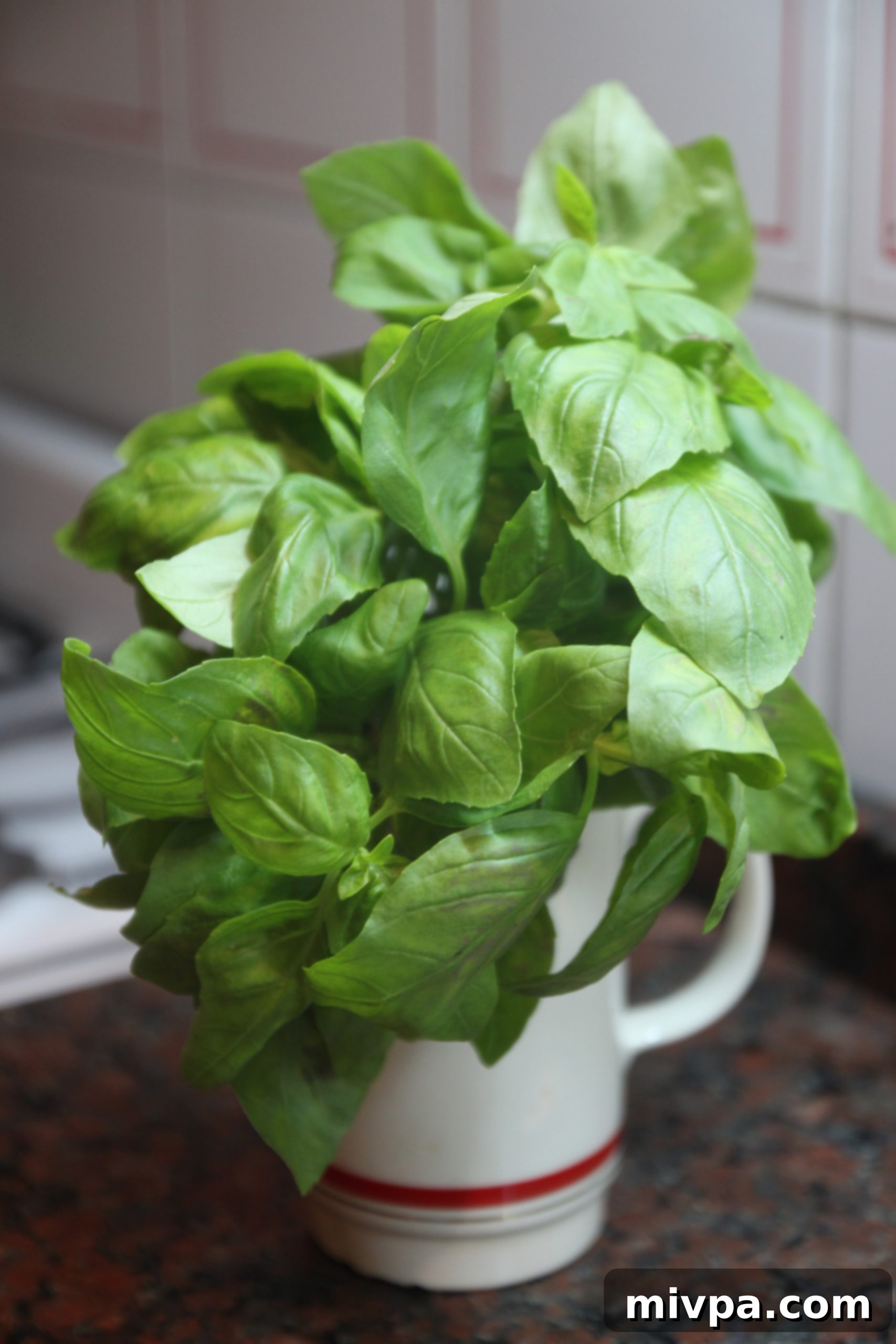
It didn’t matter that I was physically tired and increasingly hungry. The thought of giving up halfway and grabbing some pre-packaged food from the kiosk downstairs briefly crossed my mind, but I quickly dismissed it. I consciously obliged myself to stay in the kitchen, to see through what I had started, to honor that inner need for creation. The satisfaction of a homemade meal, crafted by my own hands from fresh ingredients, was the ultimate goal – a reward far greater than convenience could offer. It was a commitment to self-care through the culinary arts.
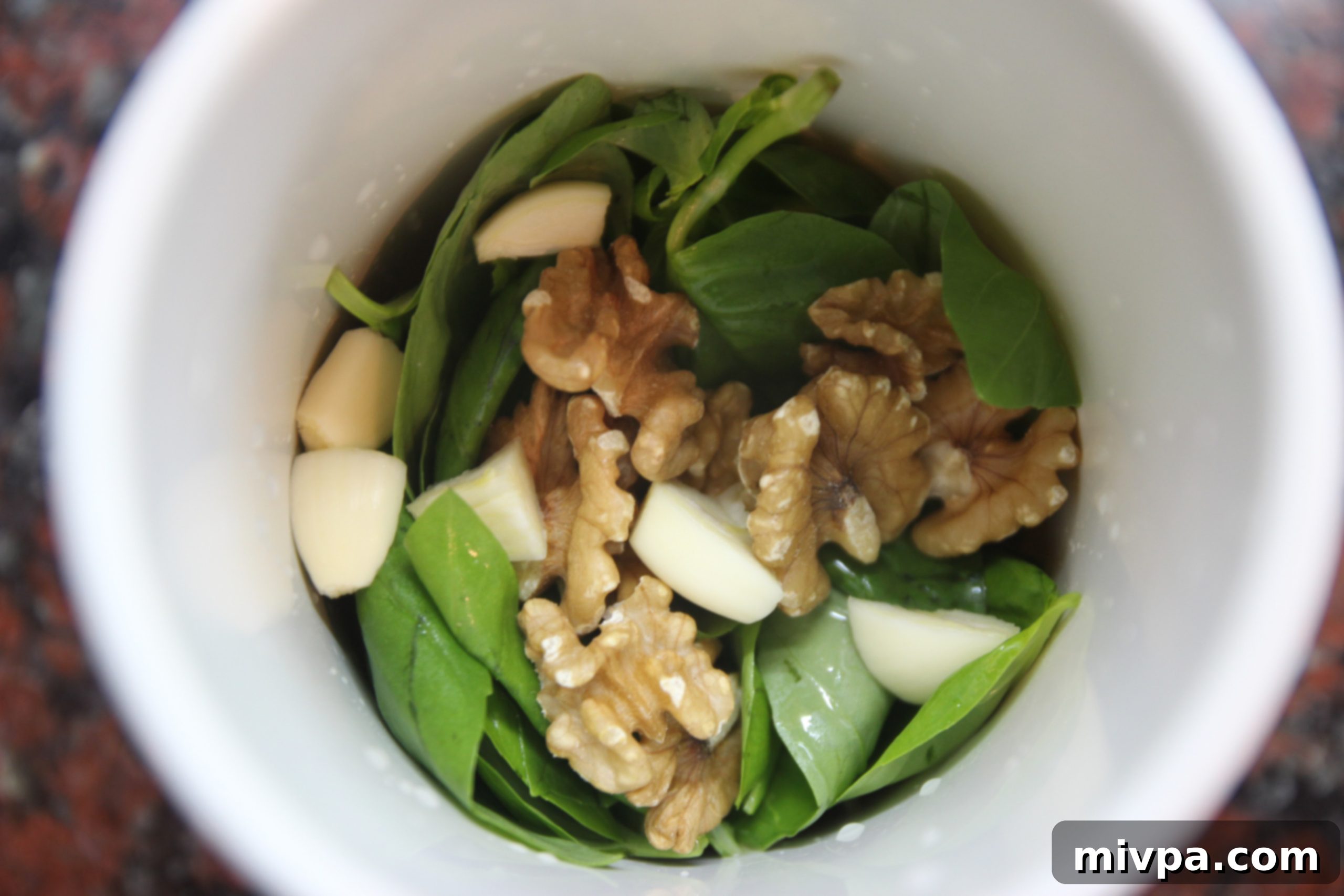

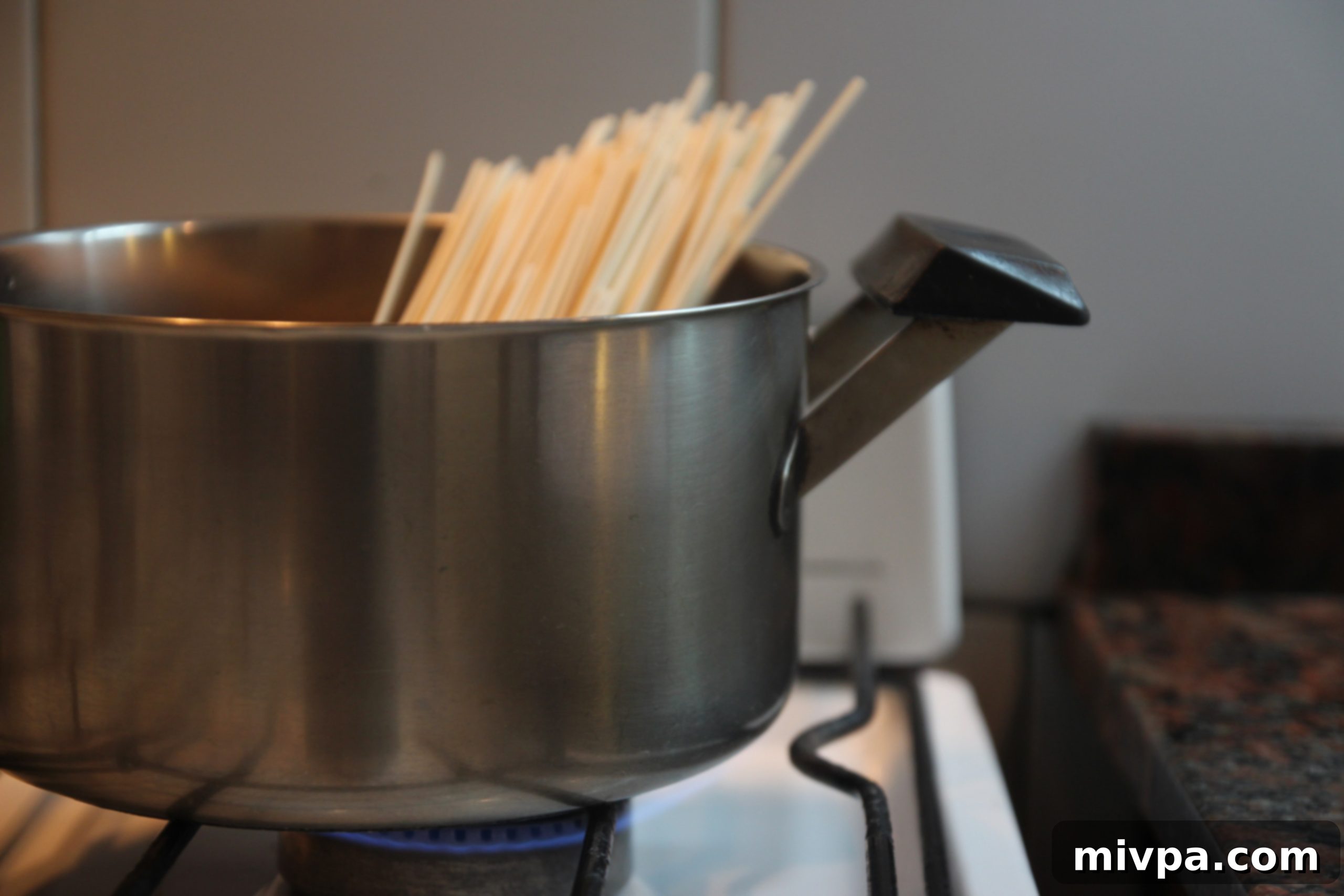
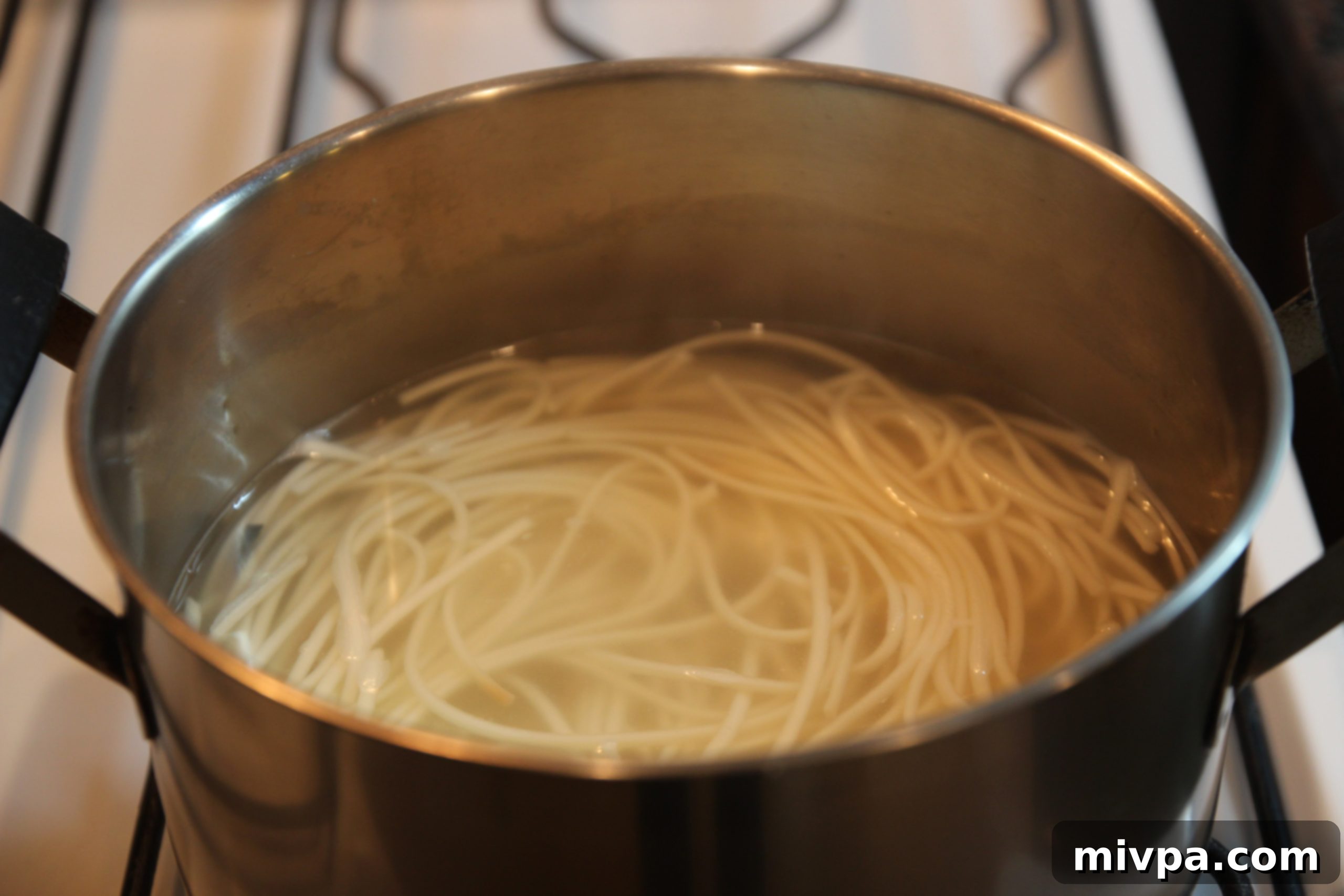
And it was truly good. A simple, yet immensely gratifying, dinner for one on a quiet Thursday night. By the time I had finished cooking, the clock hands had already crept past 11 PM, an hour when most people are settling into bed. I, however, was just beginning to sit down to enjoy the fruits of my labor, savoring each bite and the peaceful solitude that only a self-made meal can offer. It was a moment of pure, unadulterated satisfaction, a testament to the rewards of patient creation.
The spaghetti lay on the plate, smooth and soft, its trails beautifully stained a delicate light green by the freshly made pesto, an inviting hue promising vibrant flavor.
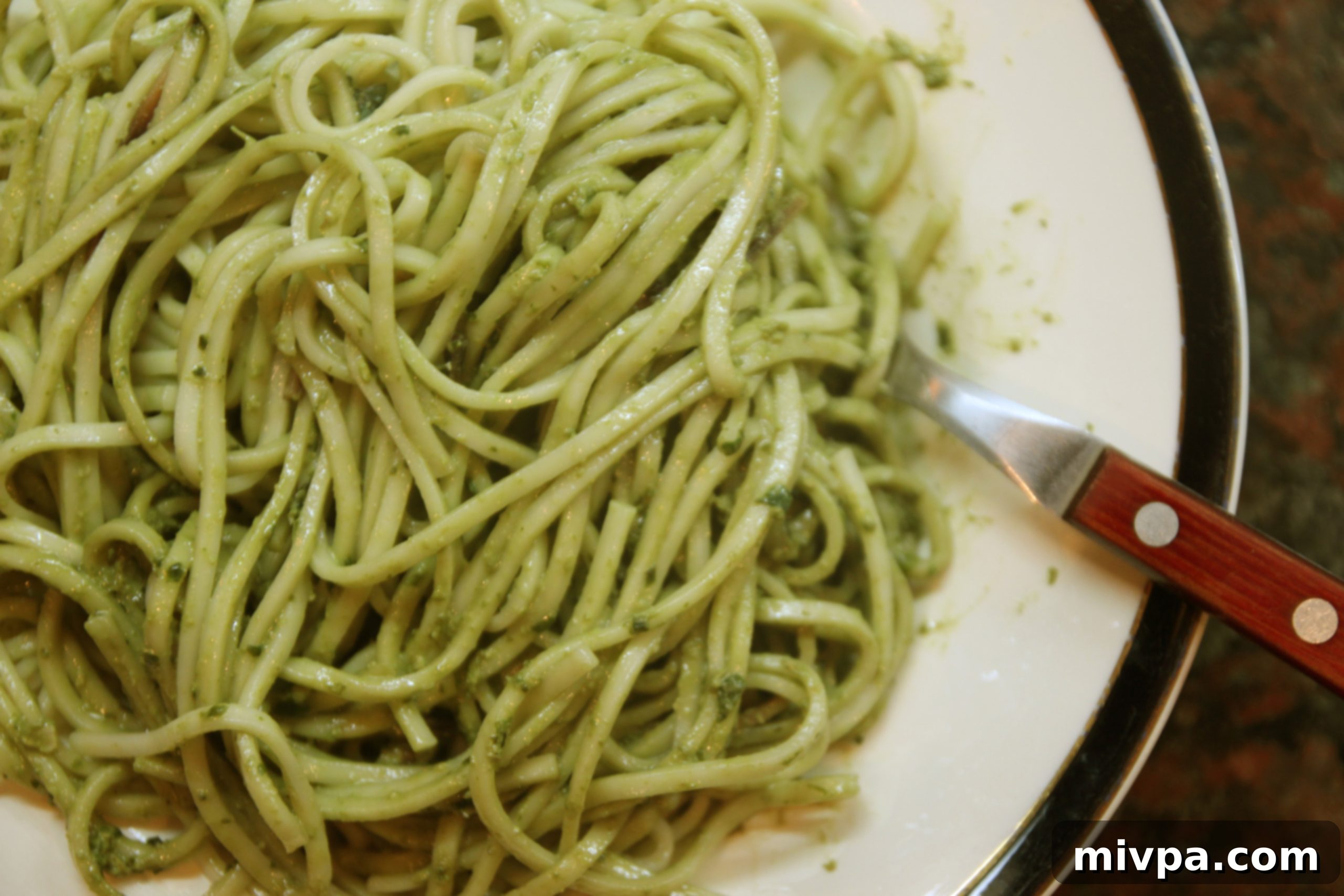
Each strand was adorned with tiny, flavorful pieces of processed garlic and crushed walnut, clinging delightfully, all intertwined with tender strips of savory ham. It was a simple yet utterly beautiful dish, a perfect culmination of a day that began with mental exhaustion and ended with mindful creation – a feast for both the senses and the soul.
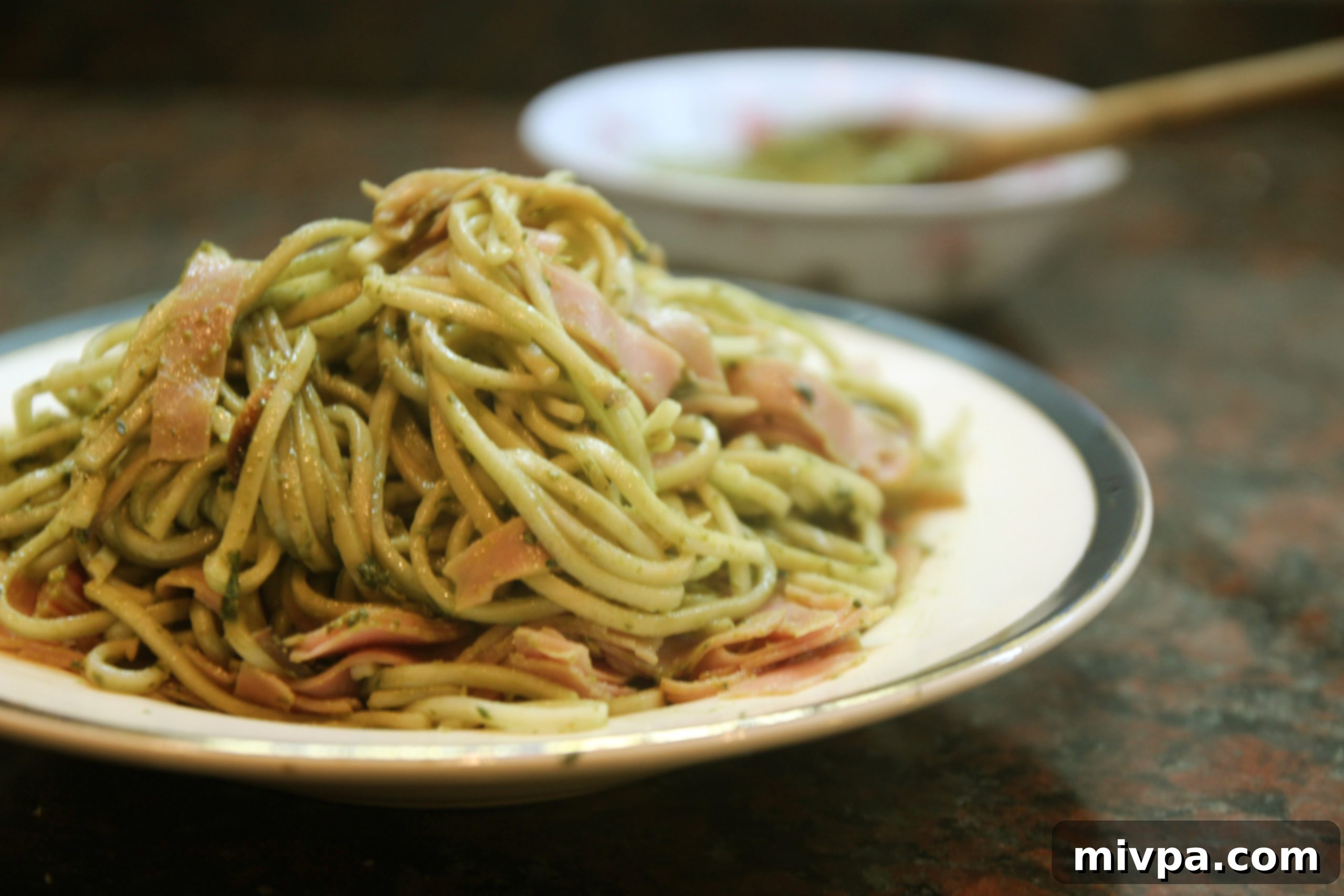
Basil Walnut Pesto & Ham Spaghetti Recipe
BASIL WALNUT PESTO & HAM SPAGHETTI (Serves 2)
Ingredients:
- 1 bowl of fresh basil leaves (about 2-3 cups, loosely packed), thoroughly washed
- 1 handful of walnuts (approximately 1/2 cup), lightly toasted for extra flavor if desired
- 4 tablespoons of high-quality extra virgin olive oil, plus extra for serving if desired
- Salt to taste (sea salt or kosher salt recommended)
- 1/2 cup of room temperature water (adjust as needed for desired pesto consistency)
- 200g of ham, preferably deli-sliced or pre-cooked, for easy preparation
- 1 large clove of garlic, peeled and roughly chopped
- 100g of uncooked dried spaghetti (or your favorite pasta shape)
- Optional: Freshly grated Parmesan cheese and extra walnuts for garnish
Steps:
- Prepare the Basil: Carefully pluck fresh basil leaves from their stems and wash them thoroughly under cold water. Pat them dry with a clean kitchen towel or use a salad spinner to remove any excess moisture.
- Make the Pesto: In the bowl of a food processor or a high-speed blender, combine the cleaned basil leaves, walnuts, the peeled and chopped garlic clove, and 4 tablespoons of olive oil. Begin to process the ingredients, gradually adding the 1/2 cup of room temperature water (or slightly more, a tablespoon at a time) until you achieve a homogenous, smooth, and vibrant green paste. Season the pesto generously with salt to taste, blending again briefly to incorporate.
- Cook the Spaghetti: Bring a large pot of generously salted water to a rolling boil. Add the spaghetti and cook according to the package instructions until it reaches an al dente texture (firm to the bite). Drain the cooked pasta well, reserving a small amount (about 1/4 cup) of the starchy pasta water if needed to adjust the pesto’s consistency later.
- Prepare the Ham: While the pasta is cooking, take the ham and slice it into thin, bite-sized strips. This makes it easier to mix into the spaghetti and ensures a piece of ham in every bite.
- Combine and Season: Transfer the hot, drained spaghetti to a large mixing bowl or back into the pot it was cooked in. Add the freshly made pesto paste. Toss gently to ensure every strand of spaghetti is beautifully coated with the fragrant pesto. If the mixture appears too dry, add a splash of the reserved pasta water or an extra drizzle of olive oil to achieve a smoother consistency.
- Final Seasoning: Taste the spaghetti and adjust the salt if necessary. Remember, the ham and any added cheese will also contribute to the saltiness.
- Add Ham: Gently fold in the sliced ham strips, ensuring they are evenly distributed throughout the pasta. Mix carefully to avoid breaking the spaghetti strands.
- Garnish (Optional): Serve the Basil Walnut Pesto & Ham Spaghetti immediately. For an extra touch of flavor and texture, garnish generously with freshly grated Parmesan cheese and a few extra walnuts for crunch. Enjoy this simple, delightful meal!
Pluck basil leaves from their stems and wash clean, preparing them for the aromatic pesto base:
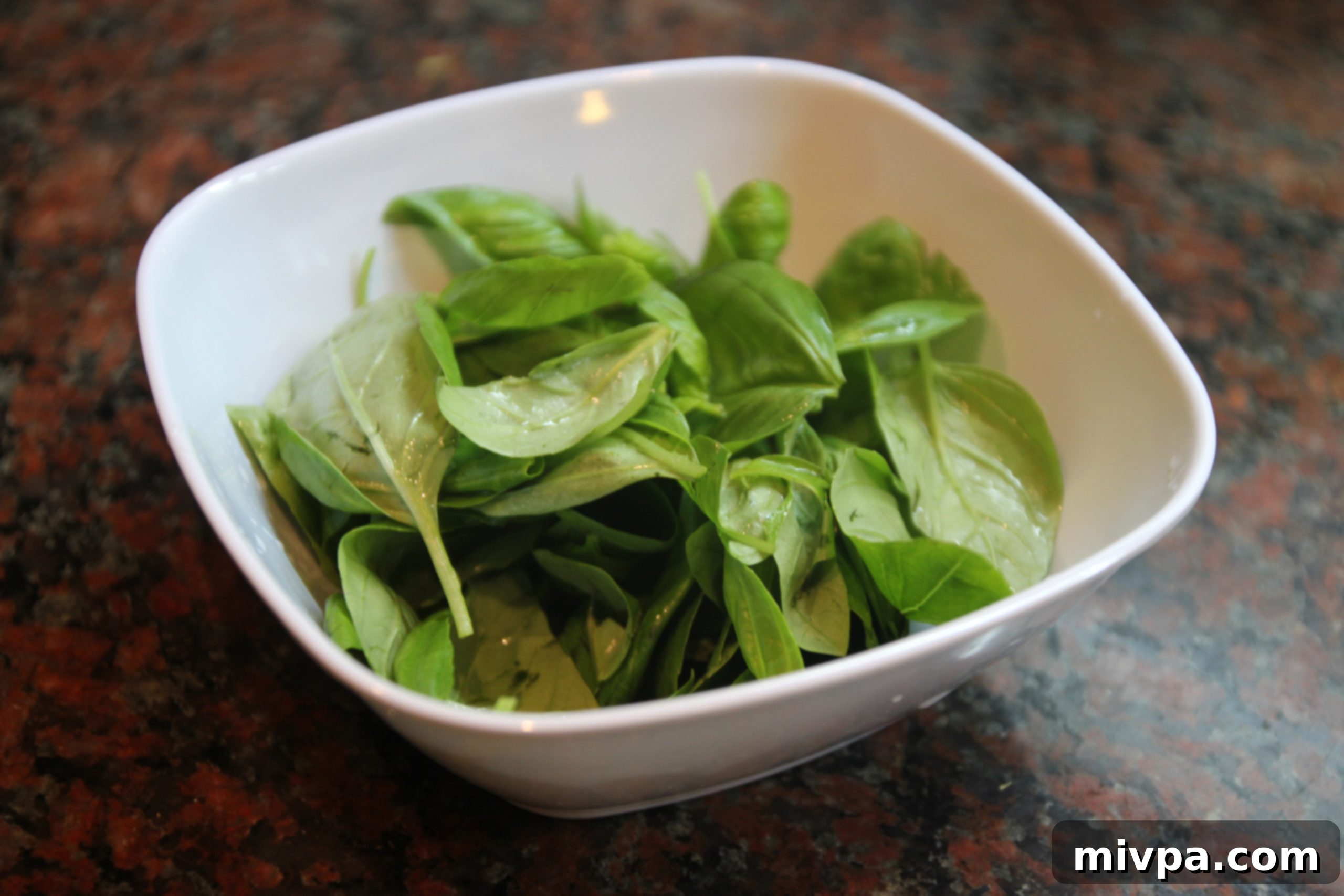
Process basil leaves, garlic, walnuts, and olive oil in a blender or food processor until a vibrant green, textured mixture begins to form:
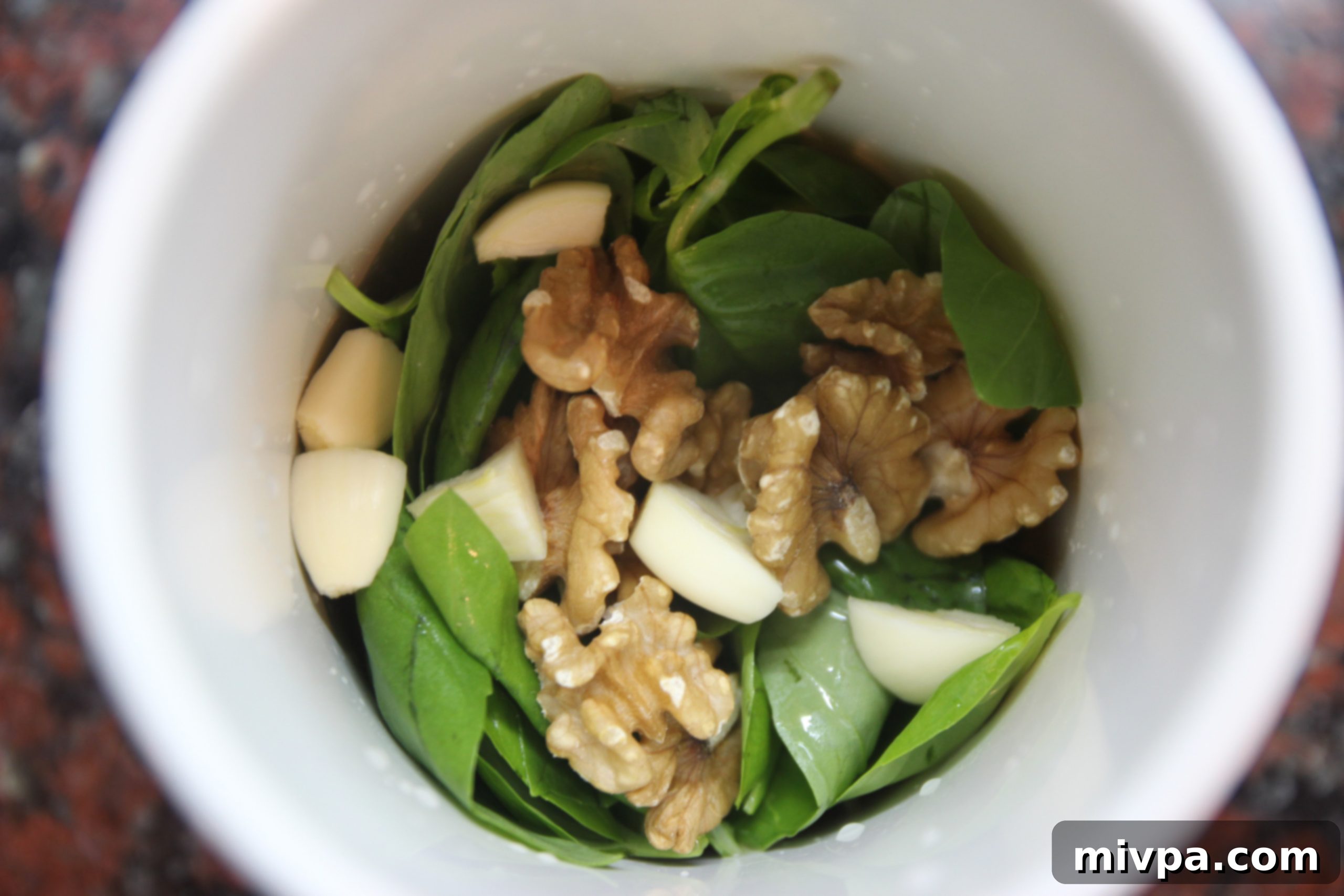
Continue blending until you achieve a smooth, homogenous paste, rich in color and inviting fragrance, indicative of fresh, homemade pesto:
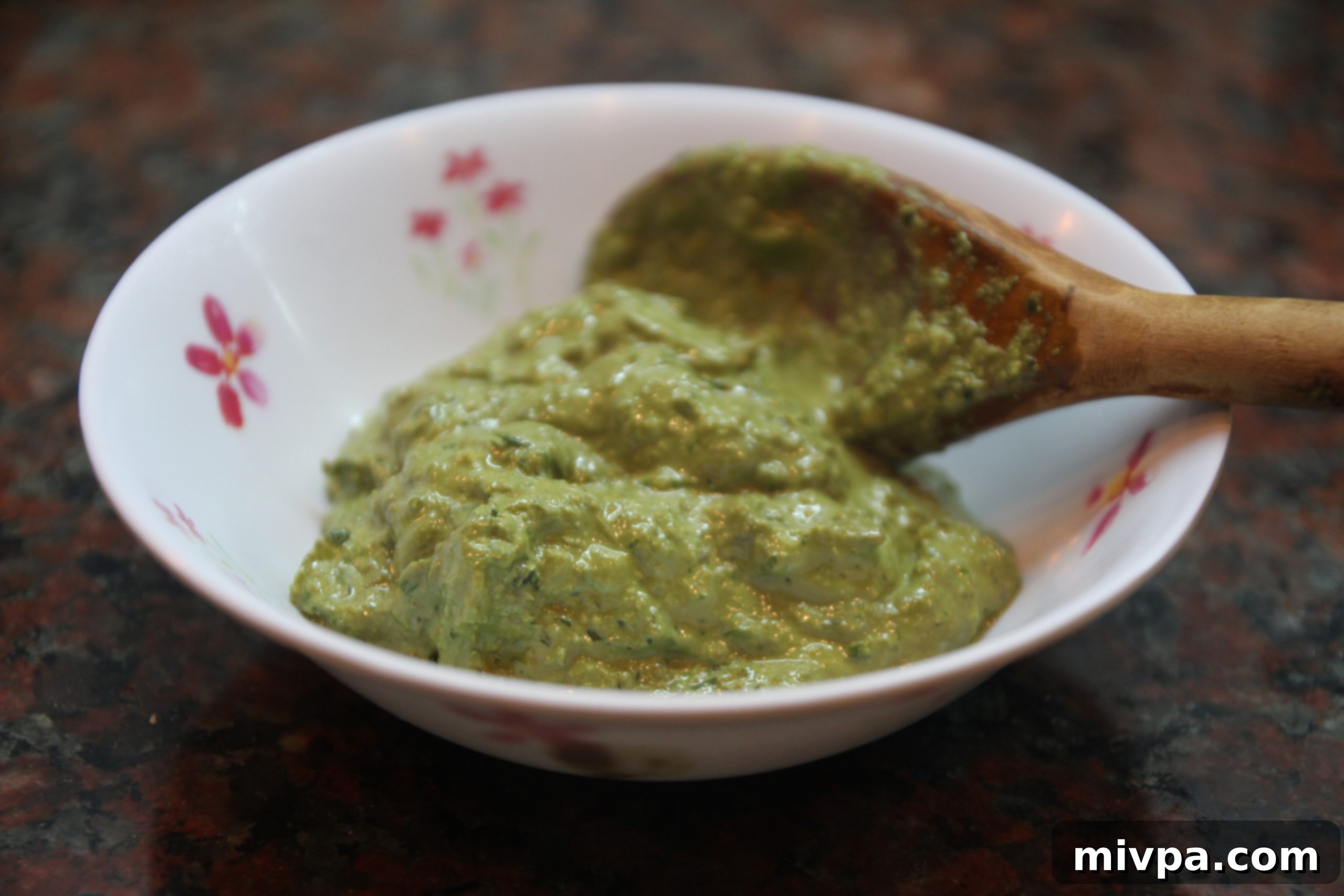
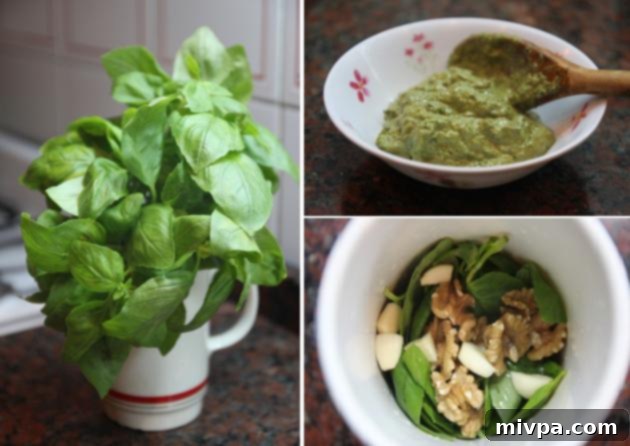
Cook spaghetti according to package instructions until perfectly al dente, ensuring a delightful texture that holds up to the pesto:
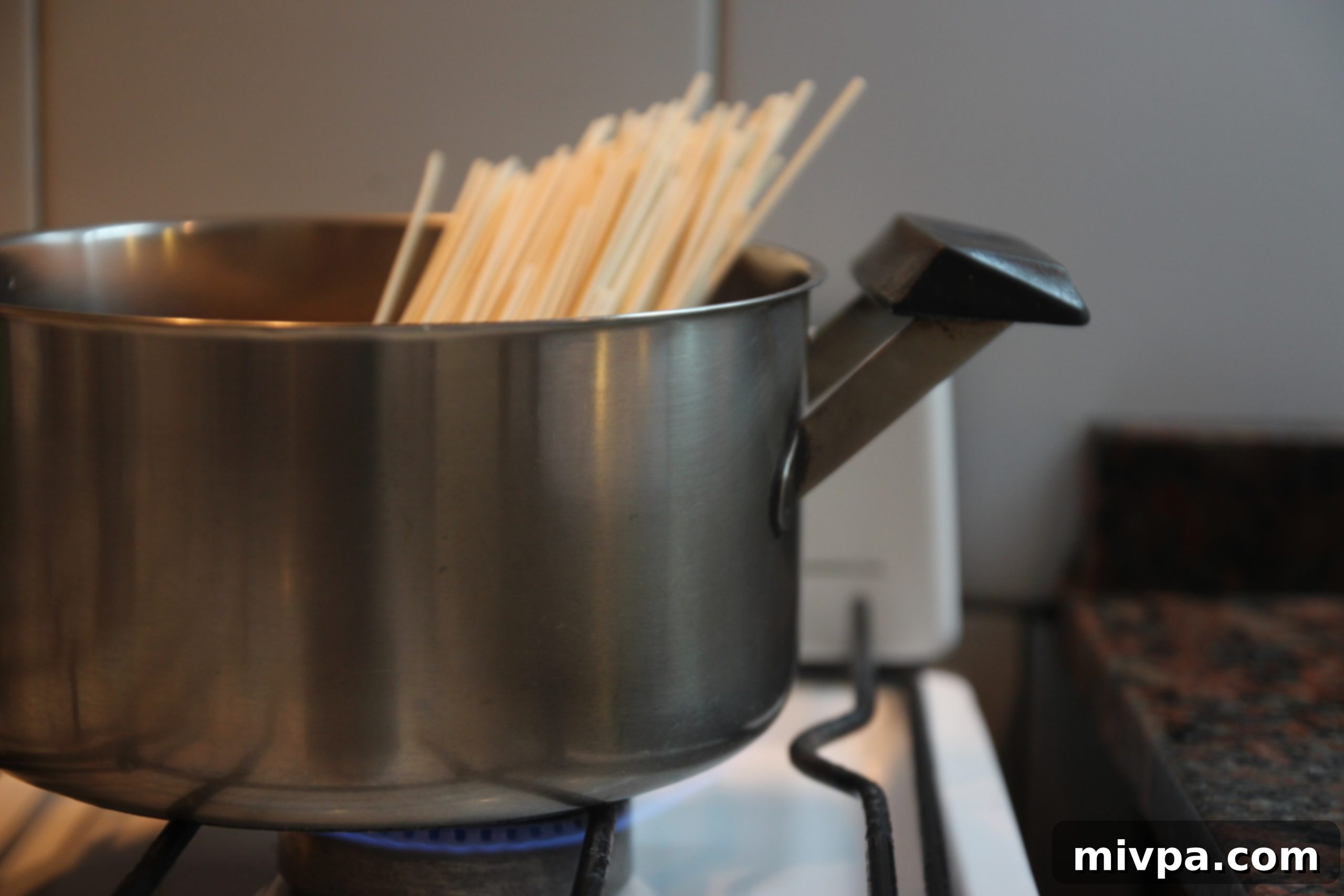
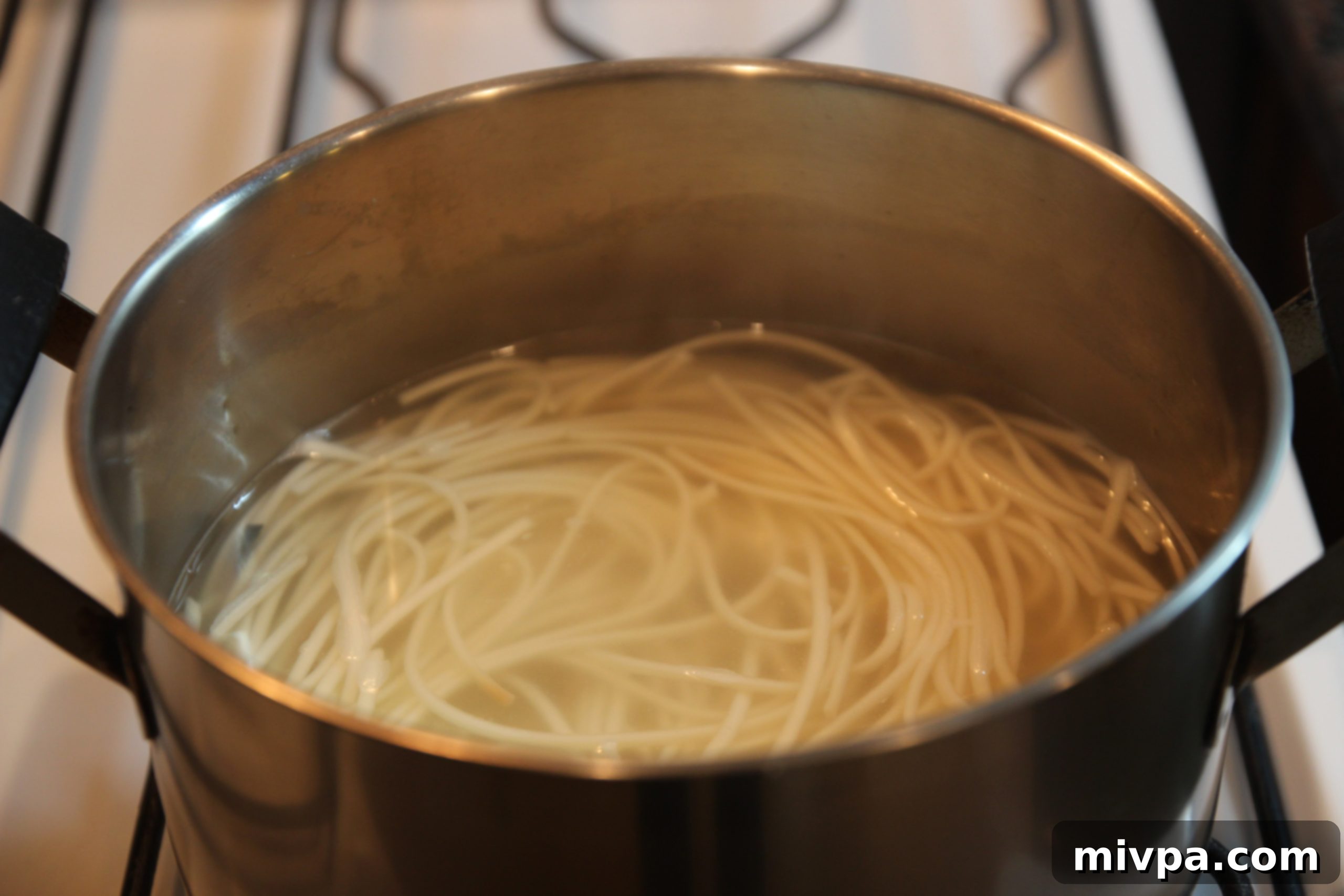
Slice ham into thin, even strips, ready to be folded into the flavorful pasta, adding a savory element:
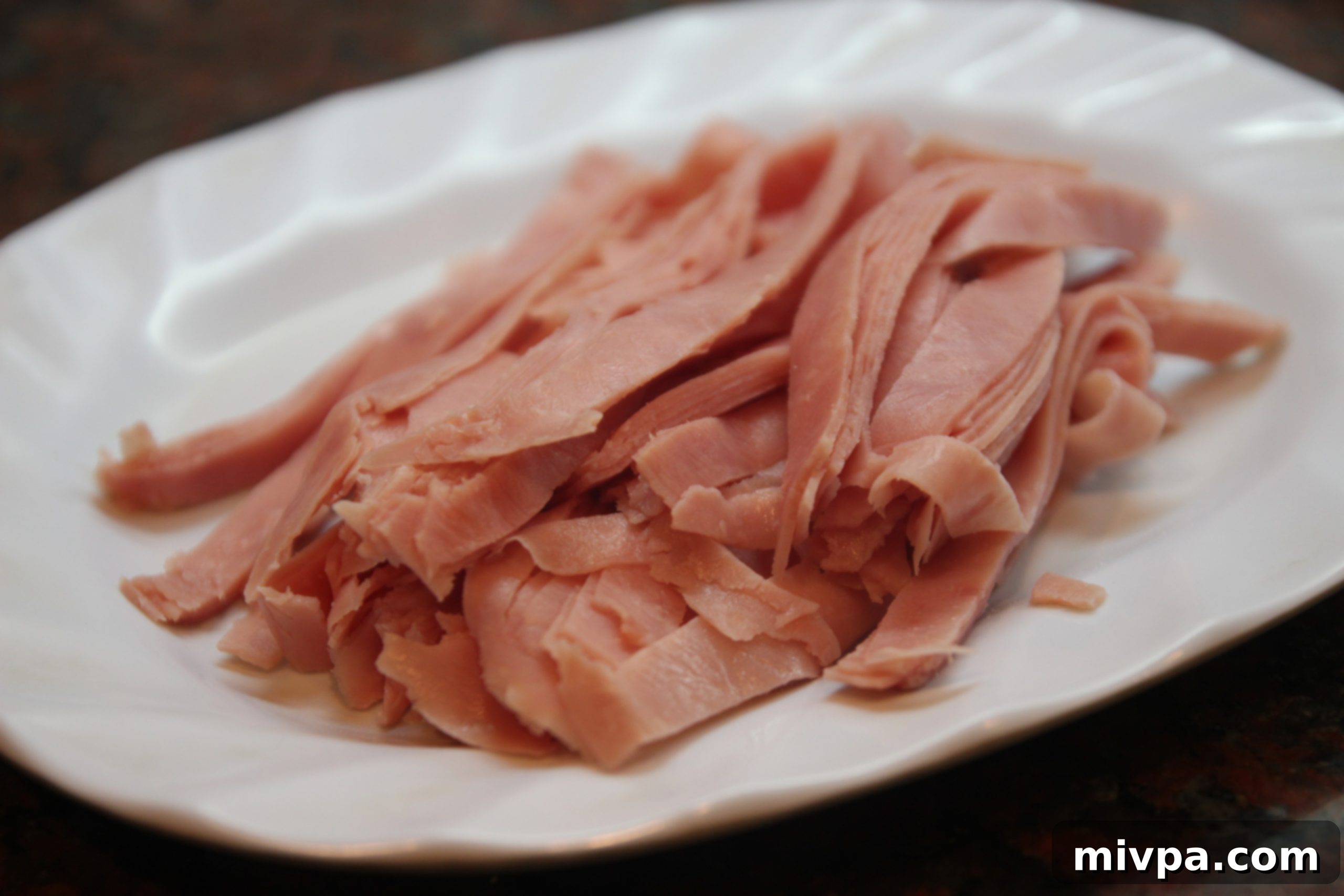
Mix the cooked spaghetti with the vibrant pesto paste, adding extra olive oil if needed to achieve a luscious, even coating:
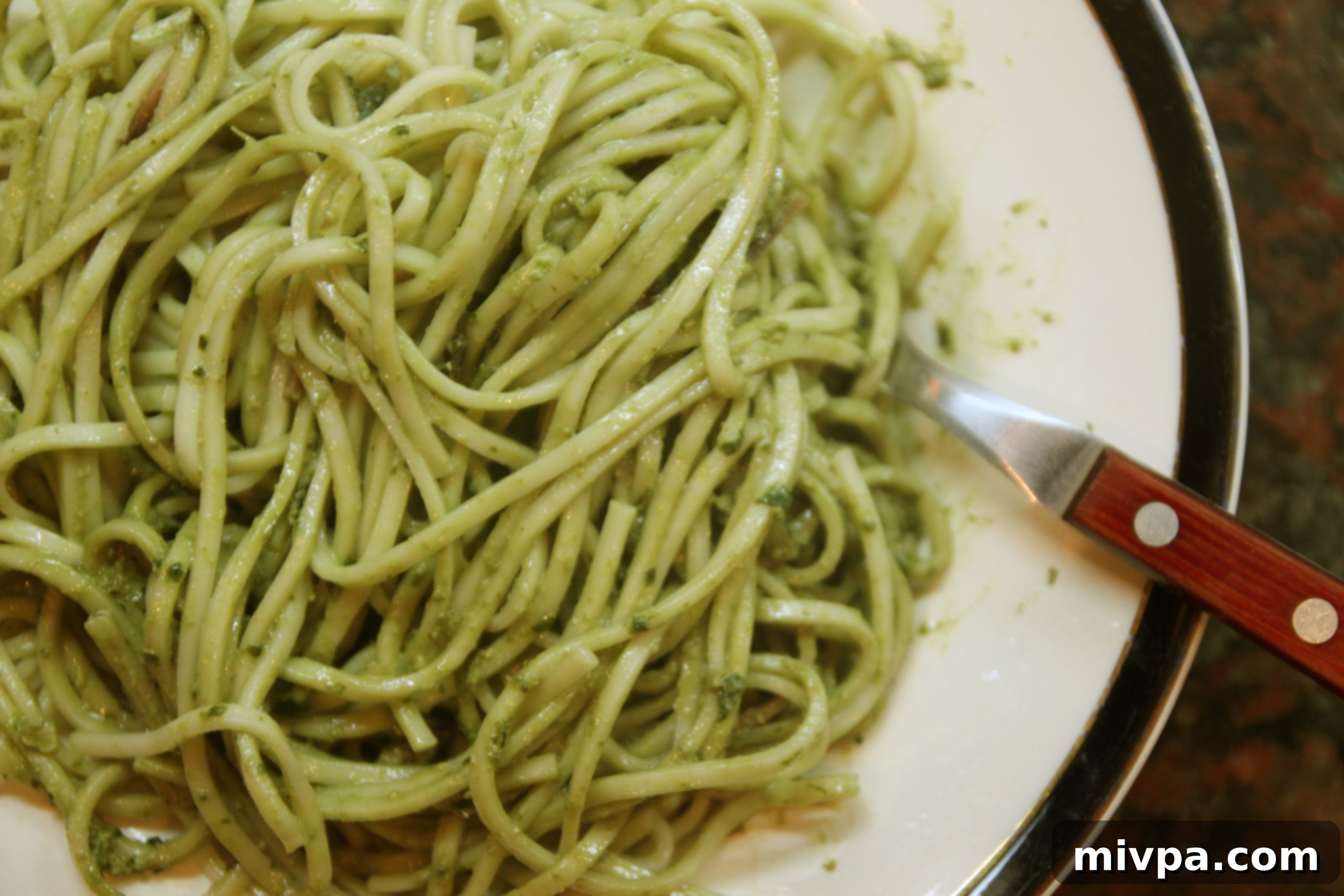
Add the prepared ham and gently mix together, ensuring an even distribution of all ingredients for balanced flavor in every bite:
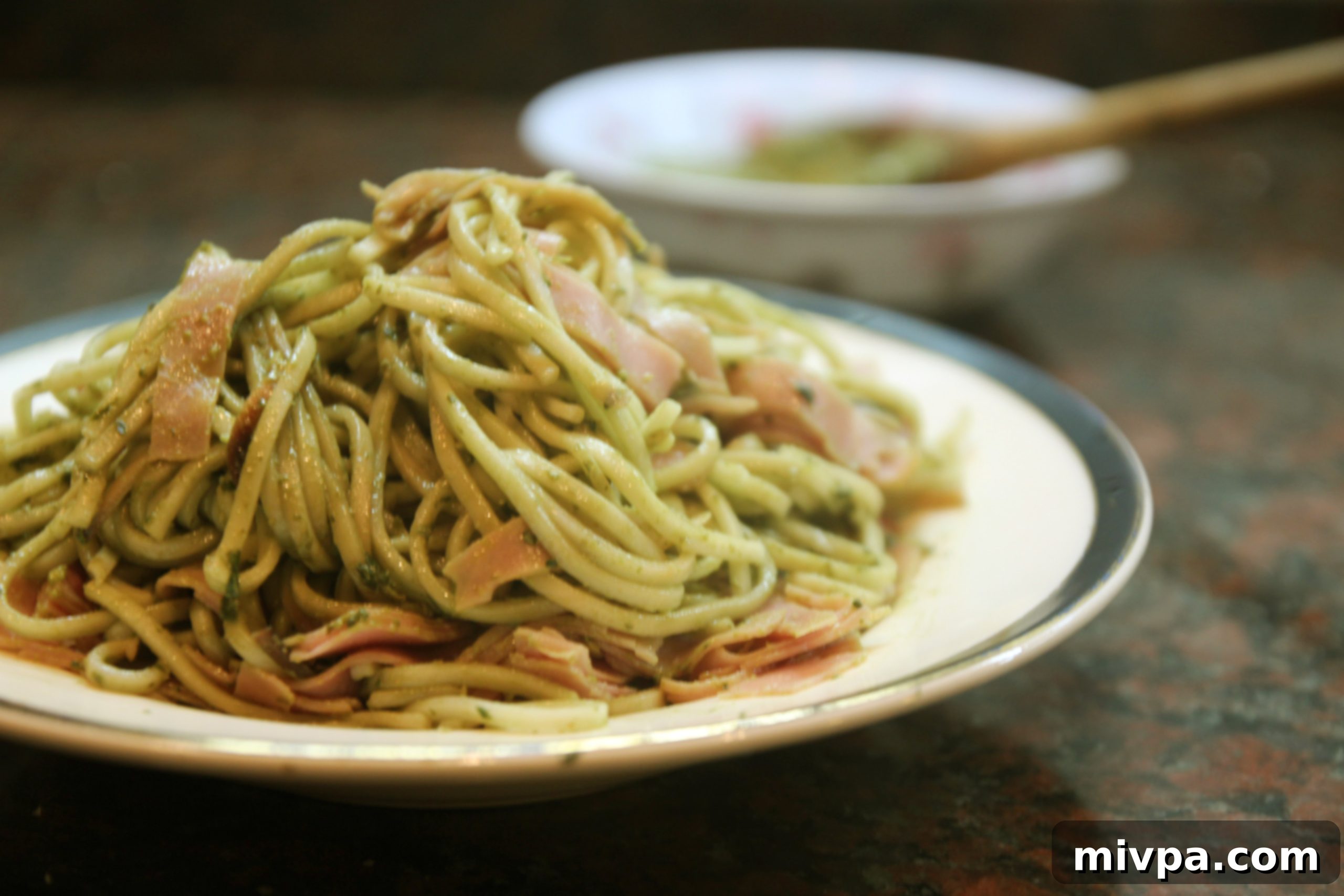
Garnish generously with freshly grated cheese and a sprinkle of walnuts for an added layer of texture and delightful flavor contrast:
